You searched for: 外貿推廣zber【TG飞机:@bapingseo】波兰引流神器【TG电报:@bapingseo】杭州seo網絡優化公司【Telegram:@bapingseo】曼联最新下载万豪国际app安卓版亚博体育app下载苹果注册领取体验金35元?20220708yF7eQG.html
<< Previous | Displaying results 1-25 of 81 for "外貿推廣zber【TG飞机:@bapingseo】波兰引流神器【TG电报:@bapingseo】杭州seo網絡優化公司【Telegram:@bapingseo】曼联最新下载万豪国际app安卓版亚博体育app下载苹果注册领取体验金35元?20220708yF7eQG.html" | Next >>
-
The Riegner Telegram
ArticleThe Riegner telegram detailed the Nazi plan to systematically murder European Jews. It was sent to the British and American governments in August 1942.
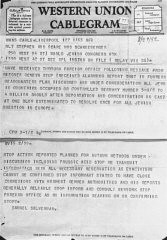
-
New York World Telegram verdict headline
ArtifactThe front page of the New York World Telegram newspaper from Tuesday, October 1, 1946, announcing the sentences of the International Military Tribunal defendants.
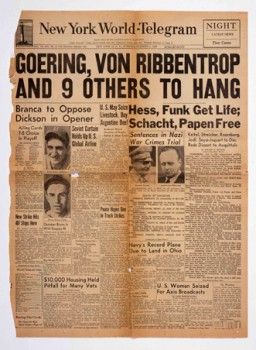
-
Telegram from Quanza Passengers to Eleanor Roosevelt
PhotoThe SS Quanza was a Portuguese ship chartered by Jewish refugees attempting to escape Nazi-dominated Europe in August 1940. Passengers with valid visas were allowed to disembark in New York and Vera Cruz, but that left 81 refugees seeking asylum. On September 10, 1940, they sent this telegram to First Lady Eleanor Roosevelt to implore her for help.
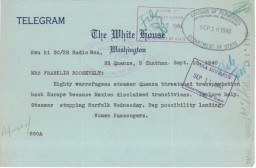
-
Second telegram from the Chief Rabbi of Vilna asking for aid
DocumentA second RCA Radiogram telegram from Rabbi Grodzenski, Chief Rabbi of Vilna, to the Central Relief Committee in New York. He requests aid for refugees who have gathered in Vilna. The telegram says that more than 1,600 yeshiva students and their families from over 10 cities throughout Poland have fled to Vilna, where they remain in terrible living conditions. November 5, 1939. [From the USHMM special exhibition Flight and Rescue.]
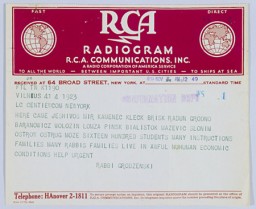
-
Radiogram from Moritz Schoenberger on the "St. Louis"
DocumentOn May 25, 1939, artist Moritz Schoenberger sent this radiogram (a telegram sent by radio) from the ocean liner "St. Louis" during the voyage from Hamburg, Germany, to Havana, Cuba. On this voyage, the "St. Louis" carried over 900 Jewish refugees fleeing Nazi persecution. The telegram reads, in part, "Physically and spiritually recovered and invigorated most confident about reaching Havana Saturday. Money received. Many thanks. Kisses. Papa." Schoenberger's optimism proved unfounded. Cuban authorities…
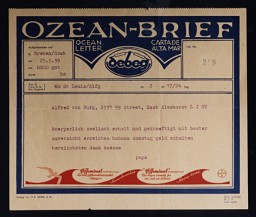
-
Jewish Refugees Aboard the SS Quanza
ArticleThe SS Quanza was a Portuguese ship chartered by 317 Jewish refugees attempting to escape Nazi-dominated Europe in August 1940. Learn about its journey.

-
Alice and Heinrich Muller in costume for Purim
PhotoAlice and Heinrich Muller pose for a photograph while in costume for the Purim holiday. Hlohovec, Czechoslovakia, ca. 1934–35.
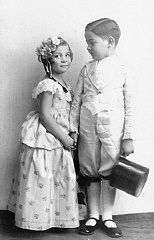
-
Beifeld album page outlining the labor service's roles in the war effort
ArtifactA page of drawings illustrating the contribution of Jewish Labor Servicemen to the war effort. At the top: "The different platoons work hard at the battle front and in the no man's land [between the armies]. They actively participate in the fighting. They carry ammunition to the Hungarian soldiers." In the middle: "They defuse land mines. They bury the dead, including those that had been left unburied from the winter campaign. They carry soldiers wounded on the front lines to safety." At the bottom: "For…
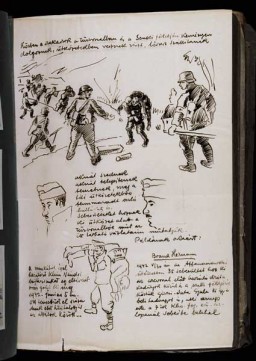
-
Excerpts from the President's Commission Report
ArticleIn 1978, the President's Commission on the Holocaust was charged with submitting a report on the creation of a Holocaust memorial in the US. Read excerpts.

-
Holocaust Denial: Key Dates
ArticleBrowse a timeline listing some key events in the evolution of Holocaust denial and the distortion of the facts of the Holocaust.
-
American Jewish Congress
ArticleThe American Jewish Congress led anti-Nazi protest rallies in the 1930s and 1940s. Learn about the AJC's creation, leadership, activities, and rescue efforts.

-
A genealogical chart of the Franz family
DocumentA genealogical chart of the Franz family, composed of identification photographs taken by the criminal department of the Aschaffenburg Identification Service [Erkennungsdienst]. Bavaria, Germany, 1942. This particular Romani family tree includes notes labeling individuals as "vagrants," "invalids," or "habitual criminals." Racial hygienists would collect genealogical documents or create family trees in order to identify, register, and classify all Romani people living in Nazi Germany. Roma (pejoratively…
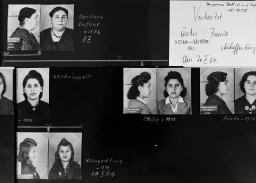
-
Jewish lawyers line up to apply for permission to appear before the Berlin courts
PhotoJewish lawyers line up to apply for permission to appear before the Berlin courts. New regulations set forth in the Aryan Paragraph (a series of laws enacted in April 1933 to purge Jews from various spheres of state and society) allowed only 35 to appear before the court. Berlin, Germany, April 11, 1933.
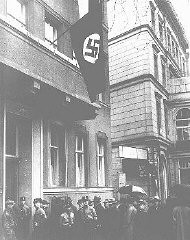
-
The Hadamar Trial
ArticleThe Hadamar Trial of October 1945 was the first mass atrocity trial held in the US occupation zone of Germany following World War II.

-
Cyprus Detention Camps
ArticleIn 1946-48, the British government intercepted tens of thousands of Holocaust survivors seeking to reach Palestine and held them in detention camps on Cyprus.

-
Frank Liebermann has a conversation with his teddy bear
PhotoHolocaust survivor Frank Liebermann has a conversation with his teddy bear. Germany, 1933–35. On Frank Liebermann’s first day of school in Gleiwitz, Germany, in 1935, he reported to one of the few small classrooms set aside for Jews. After school, he rushed home to avoid antisemitic attacks. In 1936, it got worse. Anti-Jewish laws now banned Frank from playgrounds and swimming pools. The family decided it was time to leave and applied for US visas. They were lucky. In October 1938, the…
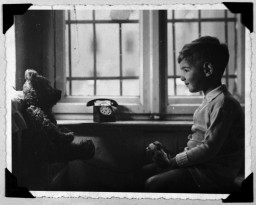
-
Eduard Schulte
ArticleEduard Schulte was a prominent German industrialist and secret anti-Nazi who leaked the first report to the west that the Nazis intended to murder all Jews in Europe.
-
William L. Shirer
ArticleAmerican journalist, foreign correspondent, author, and pioneer radio broadcaster William L. Shirer was one of the key observers and chroniclers of the Nazi regime.
-
Auschwitz Through the Lens of the SS: Frankfurt Trial
ArticleKarl Höcker’s album shows him in close contact to the main perpetrators at Auschwitz-Birkenau. Learn about his 1963 trial and the significance of his album.
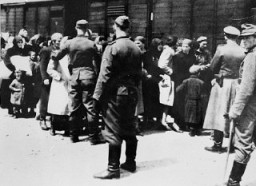
-
Incitement to Genocide in International Law
ArticleAfter the Holocaust, the IMT charged the first case of “incitement to genocide.” Learn more about the crime and its application in modern genocide law.
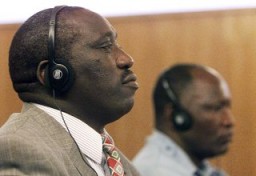
-
World War I and its Aftermath: Key Dates
ArticleExplore a timeline of key events in the history of World War I and its aftermath. Learn about the conflict and its divisive peace.

-
Israel Yitzak Kisielnicki
ID CardThe youngest of three children, Israel Yitzak was born to Jewish parents living 35 miles east of Warsaw in the small, predominantly Jewish town of Kaluszyn. Israel's mother was a housewife, and his father was a merchant who often traveled on business, by horse and wagon, to Warsaw. Israel attended public school and also received religious instruction. 1933-39: When Germany invaded Poland several days ago, many kids Israel's age, afraid of what would happen if the Germans occupied Poland, fled to the USSR,…

-
Curt Egon Rosenberg
ID CardCurt was the oldest of three children born to a Jewish family in the famous German university city of Goettingen. His father owned a linen factory that had been in the family since it was founded by Curt's grandfather. Goettingen had a small Jewish population, with only one synagogue. Curt attended public school in the city. 1933-39: The Nazis came to power in 1933. A year later, the Rosenbergs' factory was seized and the family was forced to move to Hamburg. Because he was Jewish, Curt was arrested in…
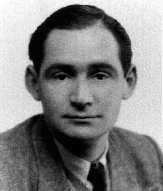
-
Naftali Bernstein
ID CardNaftali was one of six children born to a Jewish family in the small Lithuanian village of Karchai. When he was a young boy, a tutor would come to Karchai to teach the Jewish children in the village. Naftali later began public school in Janova and after graduating he went to an agricultural school. In 1929 Naftali moved to Siauliai, where he worked grading beets in a sugar beet factory. 1933-39: In Siauliai, Naftali lived with his sister, Sara, and her family who ran a dairy store. Naftali was a religious…
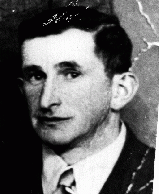
-
Yugoslav partisans prepare to fight
FilmAt his hidden headquarters in the mountains of Yugoslavia, Marshal Tito (Josip Broz), head of the Yugoslav Communist partisan movement, prepares his forces for battle. Women gather silk parachutes, used to drop supplies by Allied forces, for use as bandages. Partisans train, preparing to fight the Germans. At the height of the partisan war in Yugoslavia in 1943, Tito's partisans engaged some 35 Axis divisions, which otherwise might have been in service on the Italian or eastern fronts.

